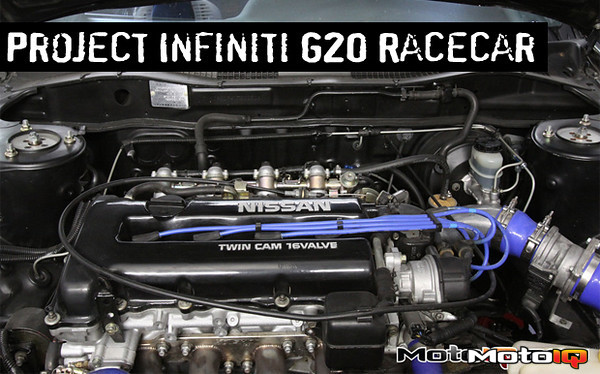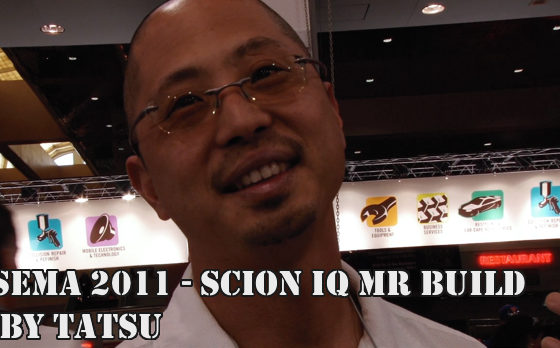,
To keep the valves from pushing down along with the tool, we pressurized each cylinder one at a time as we worked with a leakdown tester and air compressor (make sure to put it in 5th gear with the e-brake on to keep the engine from spinning, which is monumentally bad with the cams out of the engine). This method had the added bonus of not requiring us to reinstall the camshafts and rotate each piston to TDC before swapping out its valvesprings. We set our compressor at its highest setting (~120psi), and waited for the compressor to catch up before compressing the valvesprings. When pushing down with the valvespring tool give it a small push before going for broke. If you hear a “whoosh” like a blow off valve, stop, make sure your tool is pushing squarely and evenly on the spring hat, and rotate the hat a little if necessary. You will also need to make sure your compressor is large enough to keep up with whatever leakdown your engine may have, otherwise you could find yourself in the unfortunate situation of dropping a valve into the engine. We found that the small pancake style compressors were woefully insufficient for this, but just about any decent quality piston compressor seemed to be able to keep up. Another useful tip learned from our buddy was to use a little grease to hold the retainers to the valve as you release pressure on the spring hat. Just stay patient, and move along quickly, but carefully, and you'll be done before you know it.
To finish off our install, and to optimize our powerband to match our HS header and driving style, we installed a set of JWT cam gears. Large cams like JWT's C3s do need a little fine tuning to extract all the power out of them, and JWT's cam gears give you the adjustability you need, without the worry about slipping that you may experience with locking cam gears. Rather than using two plates and a lock screw to allow for cam timing adjustment, JWT did a little math and matched cam sprocket teeth to precisely machined holes to allow for cam adjustment in 2.5° increments. JWT's method of cam adjustment had two important advantages over lock-screw style cam gears: no possibility for slip, and spot-on accuracy. Due to setting our cams up with really tight lobe centers, we were extremely concerned about piston to valve contact, and any slip could result in a lunched motor. Spot-on accuracy is very important, as any misreading of the timing marks with a lock-screw cam gear could spell disaster with the extremely narrow lobe centers we are running. On our P10, with its relatively low-mounted engine and large shock towers, we were especially concerned with misreading tiny timing marks due to parallax. JWT cam gears do make adjustments more tedious, as you have to remove the cam sprocket on each adjustment, but we feel this is a small price to pay for reliability.
 |
| JWT's adjustable cam gears. These gears allow for 10 degrees of advance or retard on each camshaft with no chance for slipping. This is especially important when running tight lobe centers. Slip-plate cam gears, while convenient, did not seem like a good idea when constantly exposed to oil. |
After adjusting cam timing, it is critical that you check piston to valve clearance before you start your engine. We found the easiest way to do this is to rotate the engine (after reassembling the valvetrain, of course) and check clearance in 5° increments towards and away from TDC. When checking clearance, simply use a small prybar to confirm that the valve moves freely without contacting the piston. You're looking for at least a couple hundredths of movement in the rocker arm, so no need to pry on it a huge amount. We found that with C3s and stock 9.5:1 pistons, about 5° retard on the exhaust cam, and 5° advance on the intake cam allows for enough clearance, with some being able to get away with 7.5°. As usual, your mileage may vary, and always check clearances before starting your engine.
To take advantage of our newly found power at higher RPM, as well as making sure we left nothing on the table in regards to power output and driveability, we had our stock ECU reprogrammed by JWT with their specific C3 camshaft program. This program not only optimizes spark and fuel tables for these cams, it also raises the rev limiter to 8000rpm (only recommended with JWT valve springs) and has some driveability enhancements built into the program. One of the most-appreciated driveability enhancement was the raised 1200rpm idle. While our engine sounded like a small block with a huge cam at the stock 750rpm target idle, it had the unfortunate side-effect of constantly stalling on decel in the pits. Since we were running a lightweight race battery, we wanted to reduce the number of times we had to start the engine as much as possible, and this feature has certainly kept our battery alive. Overall, the JWT ECU is a bargain if you've got your car set up properly, as the fuel and spark tables were nearly perfect (slightly rich, for reliability on 91 octane), and all you need to really do is turn 3 or 4 bolts and you're finished with engine management. Sure, with a stand-alone and hours on a dyno you might make a little more power, but you'll likely spend a small fortune on the setup and dyno time. In any case, we felt that reliability was more important than tuning to the ragged edge for power. That rat-bastard Murphy and his stupid Law tend to show up a lot when racing.
One of the most noticeable modifications we did to the car was install a Custom Steel power steering eliminator kit (available through G-Spec Performance). This beautifully machined setup had a positive effect on many aspects of our car. For starters, we gained a little power by not having to turn the power steering pump. We also shed about 15 lbs of unwanted weight and clutter from the nose of the car. Finally, it had a profound effect on the way the car handled. With the stock power steering setup functioning, our Koni suspension, extensive roll cage, and Biggest Loser-esque weight loss program all conspired to give us about as much feedback and steering effort as a video game. It was laughably easy to saw at the wheel even when approaching ludicrous speed, and this proved to be spookier than we appreciated. Without power steering on our car, steering effort and feel are considerably improved, and steering effort around the pits isn't especially difficult. While we wouldn't necessarily install this kit on a daily driver, we highly recommend it for any track car, especially P-chassis cars (Sentras have much higher steering effort without power steering, it seems, so bring your Popeye arms).
 |
| Our beautifully machined Custom Steel power steering eliminator pulley. Removing power steering from our G20 not only freed up some ponies, it also made steering effort and feel less like a video game and more like a real car. Popeye arms for parking lot maneuvering sold separately. |



